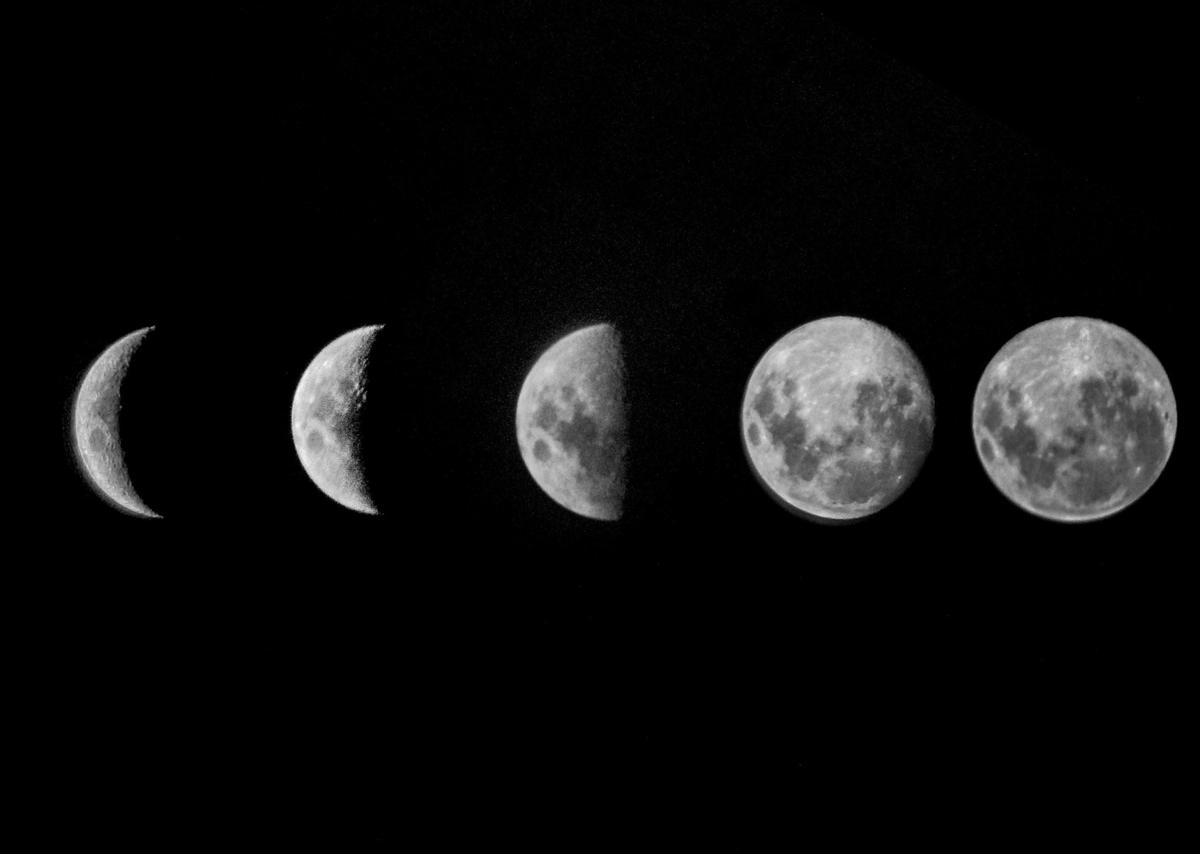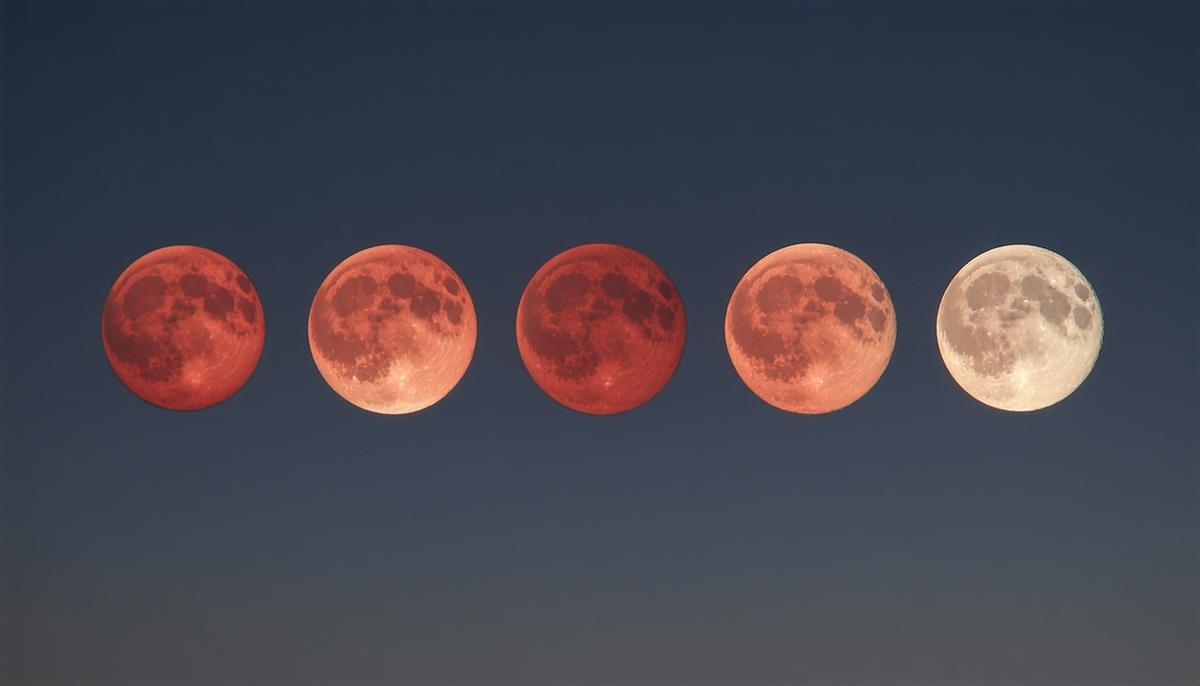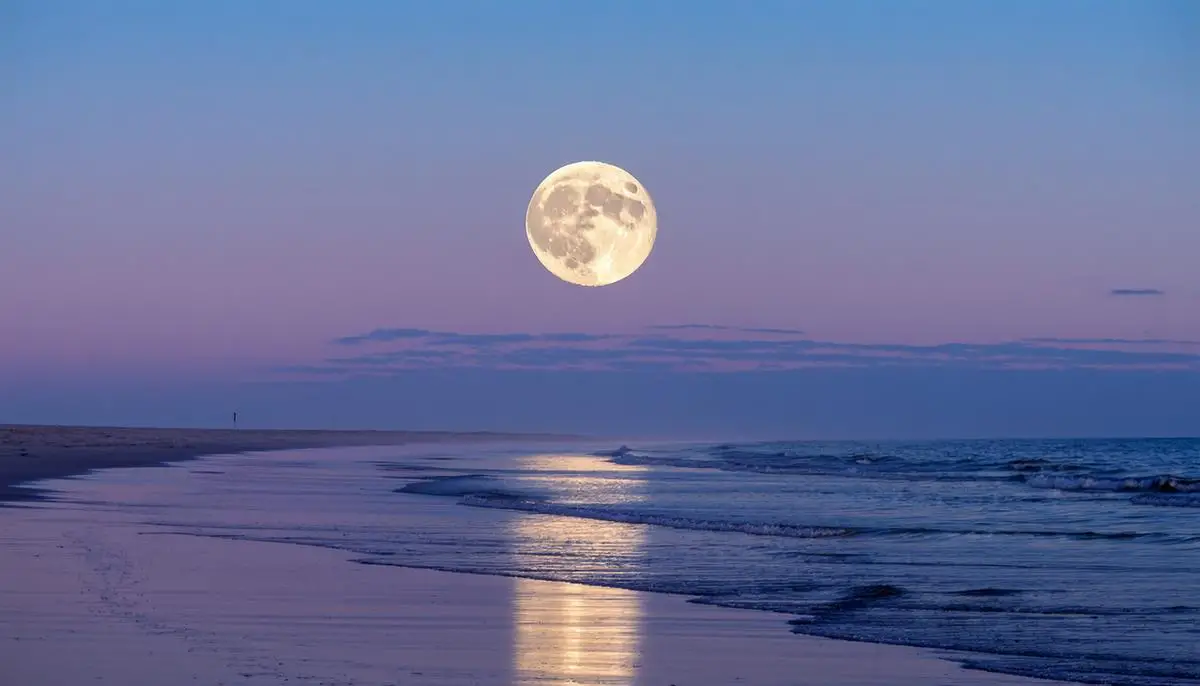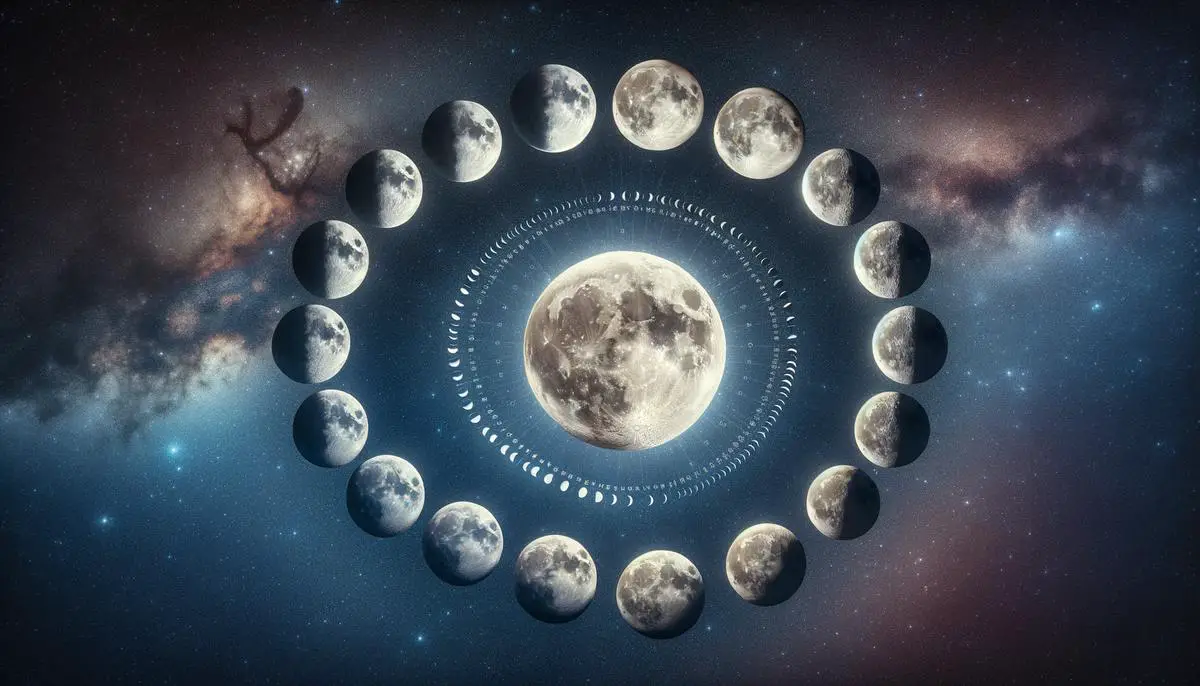Lunar Cycle and Phases
The moon's monthly cycle begins with the New Moon, when it's nearly invisible between Earth and the sun. As it progresses, we see the Waxing Crescent, a thin sliver of moonlight. The First Quarter follows, often mistaken for a "half moon". Next comes the Waxing Gibbous, where the moon appears almost full.
The Full Moon occurs when it's 180 degrees from the sun, displaying its full glow. Each month's Full Moon has a unique name, like January's Wolf Moon or March's Worm Moon. After the Full Moon, we see the Waning Gibbous, then the Last Quarter (or Third Quarter), and finally the Waning Crescent before returning to the New Moon.
This cycle, known as the synodic month, takes about 29.5 days. From Earth, we see different portions of the illuminated side of the moon as it orbits us. Occasionally, we witness a Blue Moon, the second full moon in a month, like the one on August 31.
The lunar phases shape our nights, affect tides, and continue to fascinate observers.

Major Lunar Events of 2025
2025 promises several noteworthy lunar events. The Major Lunar Standstill, occurring every 18.6 years, will begin this year. During this period, the Moon's rise and set points reach their most extreme northerly and southerly positions on the horizon.
Two total lunar eclipses, or "blood moons," will take place:
- March 13-14: Visible from North America
- September 7: Primarily visible from Australia, Asia, Africa, and Europe
Both eclipses will last about 65 minutes during totality.
On January 13-14, a full Moon will occult Mars, temporarily hiding the Red Planet behind the lunar disk. This event will be visible from locations including Washington, D.C.
A notable conjunction will occur on August 19-21, when the waning crescent Moon aligns with Venus, Jupiter, and Mercury in the pre-dawn eastern sky.
These events offer opportunities for observation and photography. For the best experience, choose locations with minimal light pollution and clear skies. These celestial happenings provide insight into cosmic mechanics and the movements of celestial bodies.

The moon's phases remind us of the steady rhythm that governs our night skies. As we look up, we're reminded of its influence on tides and its timeless beauty. Each phase offers a chance to connect with the universe, encouraging us to pause and appreciate the cosmic dance above.

- Meeus J. Mathematical Astronomy Morsels. Richmond, VA: Willmann-Bell; 1997.
- NASA. NASA's SkyCal Events Calendar. National Aeronautics and Space Administration.
- Donatiello G. The Moon and Its Phases. Personal communication; 2023.
![]()
